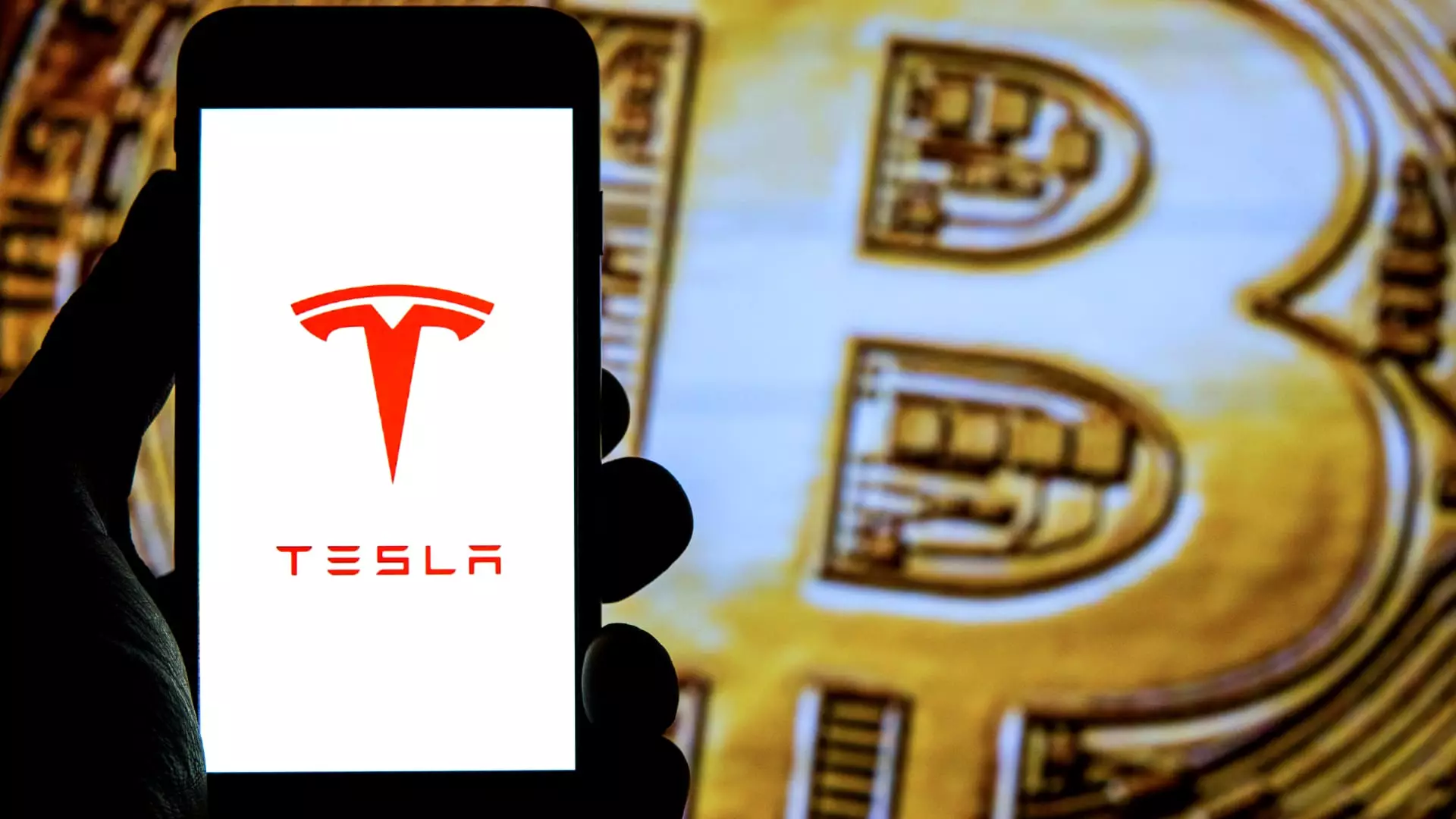Tesla’s recent quarterly report reveals a puzzling contradiction: while the company’s digital assets are valued at a substantial $1.24 billion—an impressive rise from just $722 million a year prior—this figure masks a much larger narrative of missed opportunities and strategic miscalculations. Investors are often tempted by surface-level gains, but in Tesla’s case, the real story lies beneath the shimmering veneer of digital asset valuation. The significant increase in crypto holdings suggests a sense of potential, yet it also underscores a failure to capitalize on broader market movements that could have exponentially boosted Tesla’s financial health.
This disconnect highlights a fundamental flaw in Tesla’s approach: the company’s crypto strategy appears reactive rather than strategic. Despite the booming crypto environment, Tesla’s decision to offload three-quarters of its Bitcoin holdings in mid-2022 at a much lower valuation than today’s nearing $120,000 per Bitcoin price is a glaring illustration of missed gains. Had Tesla maintained its initial investment, the company’s digital asset worth would have soared by billions. Instead, a cautious and counterproductive sell-off left billions on the table, revealing a shortsighted approach driven by market volatility and perhaps an overemphasis on immediate liquidity needs.
Crypto as an Opportunity, Not Just a Diversification Tool
Tesla’s embrace of Bitcoin was initially rooted in a progressive vision—diversifying cash reserves and positioning the company at the forefront of technological innovation. The $1.5 billion invested in Bitcoin in 2021 demonstrated a willingness to challenge conventional finance paradigms. Yet, this bold act was overshadowed by a subsequent reluctance to sustain exposure during turbulent times. The decision to sell off the majority of Bitcoin holdings during a downturn was driven by fear rather than strategic foresight. It suggests a lack of confidence in the long-term potential of cryptocurrencies, which is shortsighted given the asset class’s resilience and recent rally.
What’s more troubling is the missed opportunity to leverage crypto gains for Tesla’s core business revival. The company faces multiple hurdles—slowing auto sales, inflated costs in robotaxi and humanoid robot projects, and looming regulatory headwinds. Instead of deploying crypto gains into innovation and expansion, Tesla’s missed gains symbolize a broader failure to view digital assets as part of a holistic corporate growth strategy. Had Tesla held onto its Bitcoin investments, its holdings would be valued roughly four times higher today, giving the company a financial cushion it sorely needs amid a volatile automotive market.
The Broader Implications for Investor Confidence
Tesla’s market capitalization has taken a pounding this year, dropping about 25% and marking its worst performance among major tech firms. This decline isn’t solely attributable to traditional automotive challenges but is compounded by management’s inconsistent stance on risk and innovation. Elon Musk’s focus on ambitious projects like robotaxis and humanoid robots, although visionary, has created a costly and uncertain road ahead. Meanwhile, external factors such as tariffs and the expiration of federal EV incentives threaten to dampen future growth prospects.
Amid these challenges, Tesla’s crypto hiccup offers a lesson in strategic consistency and long-term planning. The company’s once-high conviction in Bitcoin as a store of value and catalyst for future flexibility has been undermined by a reactive selloff during downturns. This pattern signals to investors that Tesla may lack the discipline needed to navigate volatile markets and capitalize on digital asset opportunities. For a company renowned for innovation, such missteps instill doubts about its ability to adapt and secure sustainable growth in an increasingly complex economic landscape.
A Center-Left Perspective: Balancing Innovation with Responsibility
While critics often paint Tesla as a reckless risk-taker, a more balanced view recognizes the importance of responsible innovation. The company’s crypto investments symbolize a willingness to challenge traditional financial boundaries—an admirable trait that embodies boldness, but also necessitates prudent management. From a center-left liberal lens, Tesla’s missed gains highlight a failure to align innovative pursuits with a responsible stewardship of resources.
Investors and policy-makers alike should advocate for a forward-looking approach that embraces technological advancements without neglecting the importance of strategic patience and financial discipline. Tesla’s potential extends beyond shiny new products; it lies in its capacity to learn from missteps, harness emerging markets like cryptocurrencies responsibly, and prioritize sustainable growth over impulsive exits. The recent crypto setback is a stark reminder that without disciplined governance, even the most revolutionary companies risk squandering their potential and losing the trust of their stakeholders.


Leave a Reply